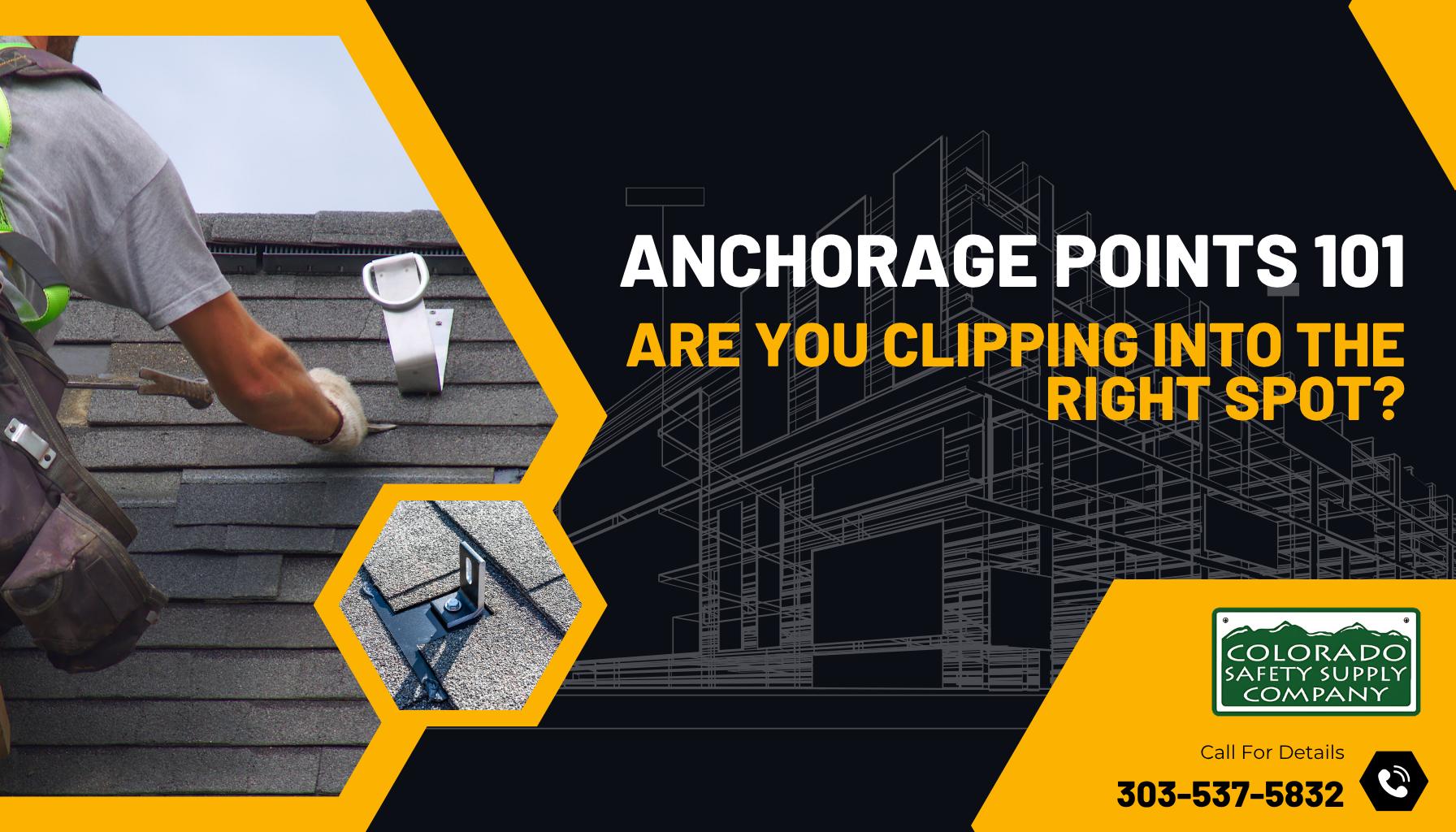If you’ve ever clipped your lanyard onto a piece of steel and thought, “Yeah, that looks solid,” you’re not alone. But you’re also not safe. Fall protection isn’t just about wearing the right harness or buying a fancy SRL. If your anchor point fails, everything else fails with it.
Let’s talk about the most overlooked (yet most critical) piece of the fall protection puzzle: the anchorage point.
What Is an Anchorage Point, Really?
An anchorage point is the part of your fall arrest system that’s literally holding you back from a serious injury or worse. OSHA defines it as a secure point of attachment for lifelines, lanyards, or deceleration devices.
Here’s the catch: not all steel beams, scaffolding, or “that big bolt over there” qualify as a compliant anchorage point.
OSHA Requirements: More Than Just "Strong Enough"
OSHA says an anchor point must be able to support at least 5,000 pounds per employee attached, or be designed by a qualified person as part of a fall protection system with a safety factor of at least two.
In simple terms, if you’re eyeballing something and saying, “That should hold me,” you’re taking a risk that OSHA and gravity won’t forgive.
Common Anchoring Mistakes We See All the Time
-
Clipping to guardrails or scaffolding cross-braces
These are often not rated for fall arrest and can collapse under load. -
Using plumbing or electrical conduit
These may look strong but are absolutely not designed for human load. -
Improvising anchor points
Wrapping a lanyard around something random is not a strategy. It’s a liability. -
Lack of anchorage in confined spaces
A surprising number of confined space entries don’t include proper anchor setups. For vertical entry, you need a tripod or davit system that’s rated for both fall arrest and rescue.
Leading Edge & Sharp Edge Work Requires Special Anchors
If you’re working near edges or sharp surfaces, you need leading edge-rated SRLs and properly placed anchorage points. The position and durability of your anchor matter even more when there’s potential for a swing fall or a sharp edge to cut your lifeline.
Temporary vs. Permanent Anchors
Temporary anchors like beam clamps, reusable roof anchors, and strap anchors are great when installed and used correctly.
Permanent anchors should be installed by a qualified person and inspected regularly. Just because it’s been there for five years doesn’t mean it’s still safe.
Anchorage Placement: Height and Location Matter
Here’s a quick rule: the higher the anchor, the better.
Anchoring low increases your fall distance and raises the risk of hitting a lower level. Side anchoring or anchoring behind you also introduces swing fall hazards, where you could pendulum into a wall or beam during a fall.
What You Can Do Right Now
-
Get training. Know what qualifies as an anchor and what doesn’t.
-
Inspect your anchor before every use. Is it secure? Is it rated? Is it the right spot?
-
Use manufacturer-rated equipment. Homemade solutions won’t hold up in court or in the air.
-
Ask questions. If you’re unsure, bring in your competent person or supervisor.
Fall protection isn’t just about having gear. It’s a mindset. Every part of the system matters, but the anchor point is where it all begins. And if it fails, it can be where it all ends.
Next time you clip in, ask yourself honestly:
"Am I connected to something that could hold a pickup truck?"
Because that’s what it takes to keep you alive when everything else goes wrong.
Need help setting up compliant anchorage systems or inspecting your current setup?
We offer rental options, anchor point solutions, and on-site training. Contact us today or swing by our shop. Safely, of course.
Have questions? Give us a call at 303-537-5832. We’re here to help.
Or check out our full line of anchor point solutions here:
👉 coloradosafetysupply.com/collections/anchorages















